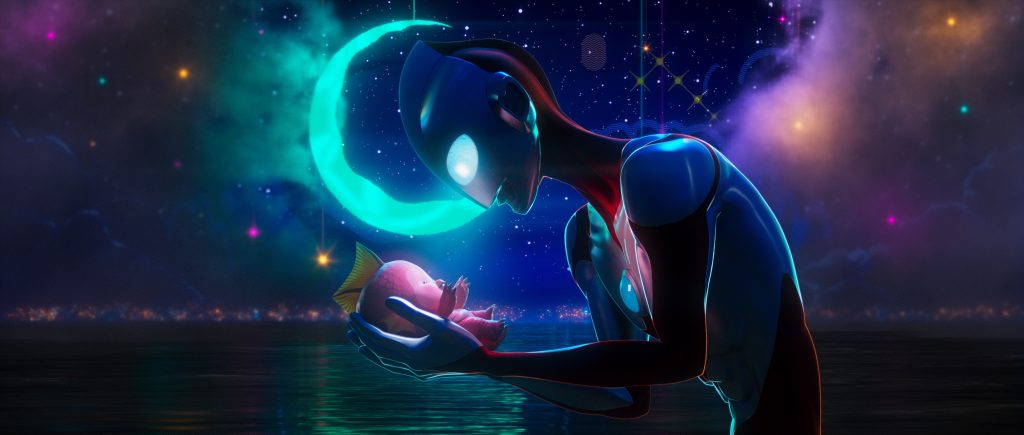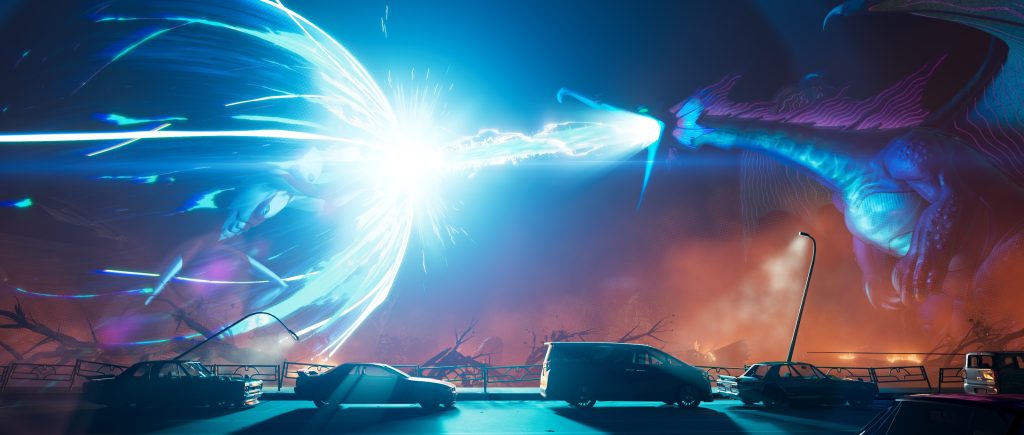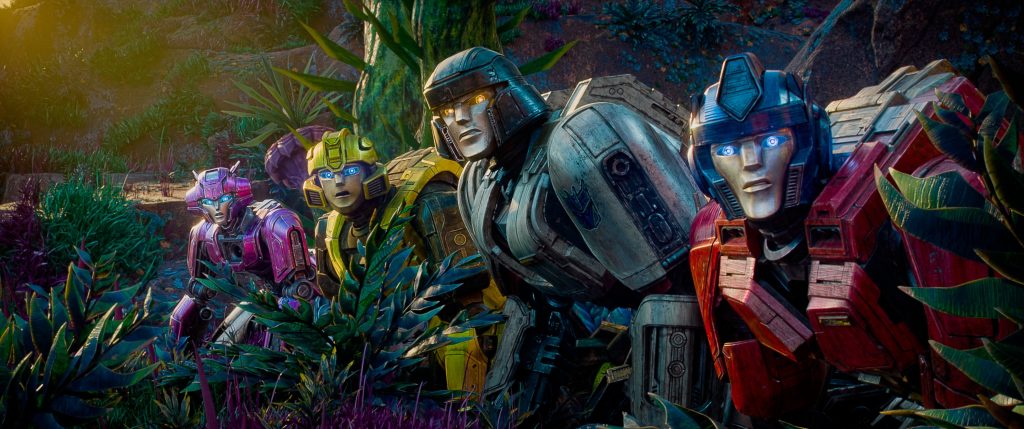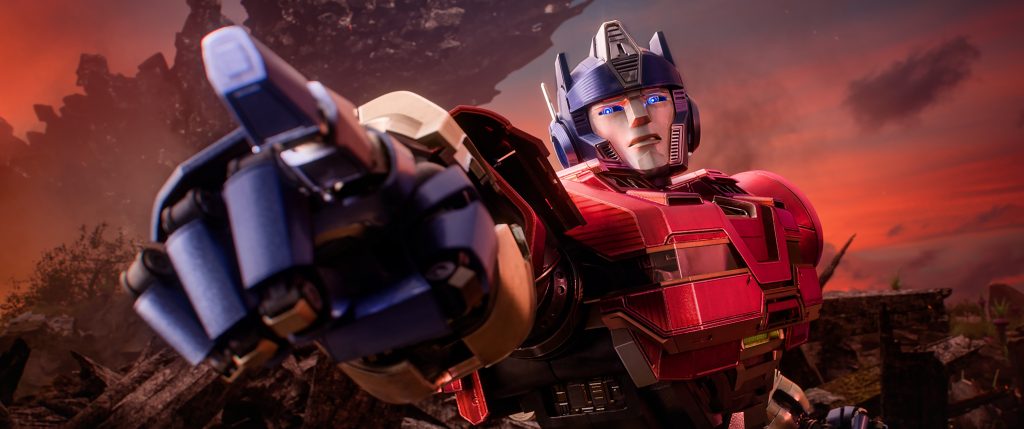Continuing a new series celebrating ILM’s 50-year legacy, featuring new interviews with ILM animation supervisors Rob Coleman, Mathieu Vig, and Stephen King.
By Jamie Benning

“ILM Evolutions” is an ILM.com exclusive series exploring a range of visual effects disciplines and examples from Industrial Light & Magic’s 50 years of innovative storytelling. Read part one of this story here.
After Rango (2011), ILM continued to focus on photoreal visual effects work, but the idea of returning to feature animation remained alive in the background. The ambition had been there for some time.
“Jim Morris [former ILM president] was always pushing for ILM to do more feature animation,” explains Rob Coleman, creative director and animation supervisor at ILM’s Sydney studio. “I remember going on senior staff retreats for years, and every year he brought it up that that was a goal for him.”
At one stage during the early 2000s, an animated Frankenstein film was in development, though it never reached production. Despite that momentum, feature animation remained secondary to ILM’s core live-action visual effects business.
When Disney acquired Lucasfilm in 2012, ILM found itself part of a larger family including not just Lucasfilm Animation, but also two giants of feature animation – Walt Disney Animation Studios and Pixar, the latter an outgrowth of a former Lucasfilm division. With such formidable in-house animation studios under the same corporate umbrella, the idea of ILM producing its own fully-animated features inevitably became more complex. For the time being, ILM leaned into its core strength: pioneering visual effects work that has long been integral to live-action storytelling.But then…“People weren’t shooting movies,” Coleman recalls. “The pandemic opened a door.” That led to renewed interest in feature animation from partner film studios. Soon, both Ultraman: Rising (2024) and Transformers One (2024) were underway.
A Return to Feature Animation with ‘Ultraman: Rising’
For decades, ILM had been at the forefront of visual-effects-based animation, but Ultraman: Rising marked a shift – embracing stylization while maintaining strong, character-driven storytelling.
Animation supervisor Mathieu Vig notes the challenge of moving from photorealistic creatures to a more expressive, feature animation style. “That was a very interesting challenge,” he tells ILM.com. “First of all, because many were eager to go back to feature animation. But a lot of people had never worked in feature animation, me included. So that was definitely a bit of a scary enterprise after all of these photoreal creatures and characters.”
Many of the animators came from big, effects-heavy projects and initially expected Ultraman to follow suit. “I think we were all expecting the movie to be about that. And we were ready for it. Then we realized it was not about that at all,” says Vig.
Meeting directors Shannon Tindle and John Aoshima helped align the team with the film’s more emotional and grounded tone. “They put me at ease very quickly,” notes Vig. “Because I realized how caring and how clear they were about what they wanted from me as an animation supervisor. They wanted to meet everybody. To talk to the team. They were both so clear and detailed. That way, we could focus on – does the animation feel true? Does it feel rehearsed or active?”
The directors emphasized performance-based animation first and foremost, even referencing unexpected inspirations like Kramer vs. Kramer (1979) to highlight the film’s emotional depth. “Despite the kaiju-sized spectacle, Ultraman: Rising wasn’t just about action,” Vig explains. “It was a story about family, identity, and connection. We wanted and needed to have believable characters, quite subtle acting. We wanted an interesting mix of something that looks stylized but at the same time has so much heart and groundedness. The animation reviews were always about character development. There was great trust on both sides.”

One of the defining aspects of the animation ethos is attention to imperfection – the small hesitations, twitches, and unplanned gestures that make performances feel real. “We always wanted to sneak in as much as possible. A little dirt, little accidents, a little hesitation when you grab something, scratching yourself when you’re confused,” Vig says. “Sometimes it was just a little bit too clean, a little bit too perfect. And we said, ‘Here you can add some very fine little moments where you can break the perfect choreography.’” Even quiet, dialogue-driven moments are given space to breathe.
“There’s one shot in particular that I really love,” he continues, “which is when Ken and Ami are talking in the restaurant and eating the curry. One-minute shots of Ken, explaining his life to Ami, and Ami listening. And again, nothing happens, but I remember seeing the first blocking of this shot. I was kind of mesmerized by how beautifully ‘nothing happening’ was done. Obviously, it’s not ‘nothing.’ There was a story behind it, but to make that moment engrossing and entertaining was quite something.”
This drive for grounded performance often meant starting from realism, then dialing it back into a stylized world. It became a creative muscle that benefited both the film and the artists.
“We always started with realistic acting and then tried to bring it back down to a feature animation, Ultraman style,” adds Vig. “If the whole team were a classically trained feature animation team, we would have probably worked in the opposite way. I think it’s a very good exercise, and it totally benefits us for future work in visual effects realism because we all went through this process of filtering the shot back to its essence, rather than saying, ‘I’m just going to fill it up with animation.’ We’ve been spoiled. I hope we can be spoiled again. Whether it’s robots, giant kaijus, whatever else, if you have these living, breathing characters, we can do them at ILM. And we’d all love to do more.” Ultraman: Rising wasn’t just a return to feature animation for ILM – it was a chance to apply decades of performance-focused visual effects expertise to a new kind of storytelling, and to remind themselves, and audiences, what’s possible when stylization and sincerity meet on screen.
Building an Animated Cybertron: ‘Transformers One’
For Rob Coleman, Transformers One marked both a creative opportunity and a personal return. Having previously worked as animation director on Happy Feet Two (2011) and as head of animation at Animal Logic for The LEGO Movie (2014), he was drawn back to ILM by a renewed promise: that the studio would once again pursue full-length animated storytelling alongside its groundbreaking visual effects work. “ILM was going to be doing animated features as well as visual effects,” he explains to ILM.com. “That’s what enticed me back.”
Unlike the live-action Transformers films, which blended human characters with visual effects, Transformers One is set entirely on Cybertron. The film focuses on the emotional backstory of two iconic characters, in a world without any human frame of reference.
“Director Josh Cooley made it clear from the beginning – this wasn’t part of the Michael Bay universe,” Coleman said. “It was an origin story about two friends, basically brothers, who, because of life decisions, end up on very different paths.”

This character-driven approach brought performance to the forefront of the animation process. ILM animation supervisor Stephen King emphasizes the importance of expressing emotional depth without relying solely on dialogue. “It was essential to Josh that the subtlety and the nonverbal acting was just as important as what they were talking about in the dialogue,” King tells ILM.com. “In order for an audience to connect to an animated character, you have to bring them to life and make the audience believe that they’re thinking.”
That philosophy extended to every aspect of the film’s design and animation style. For Coleman, making the robots believable also meant starting with their inner life, not just their external mechanics. “It was key that the audience think they were looking at sentient robots,” he notes. “We always thought about the life spark inside – the character’s soul.”
To support this, ILM developed new tools and techniques. Their facial animation system was rebuilt from the ground up, allowing animators more expressive control while maintaining the precision required for robotic characters. “We really tried to get the facial performance to be as emotional and realistic as possible,” King says, “but then going, well, how can we make it robotic? We added these little robotic movements into the eyes and treated them like camera apertures and shutters.“By rebuilding the facial system, it gave animators a lot more freedom to move things around,” he adds. “Transformers One was all keyframe animated. For character performances, that’s where I want to be.”
Cooley’s background at Pixar helped shape the film’s animation language, particularly in its reliance on visual storytelling and expressive silence. “Very quickly we talked about non-verbal performances, the importance of eye animation, and his desire to play the whole third act, at least in test screenings, with no sound, completely in pantomime,” Coleman recalls. “I was like, yes, yes, and yes. Okay, you and I are going to get along just fine.”
The choice to exclude human characters offered an unexpected advantage: Without the need to establish scale or interaction with live-action actors, the animators were free to define their own physical rules for the world of Cybertron.

“Not having humans in our movie actually was a great plus for us,” King says. “The Transformers being 24 feet tall doesn’t mean anything to the characters, because that’s just how tall they are. That’s the world that they live in.”
To make the robotic characters feel nuanced and alive, the animation team relied heavily on physical reference. The animators themselves brought an additional layer of ownership to each shot.
“One of the great things about the movie is that all the reference was done by the animators themselves,” King explains. “Every shot, animators would act themselves or they’d get someone else to act out for them – and they would be able to put those performances into the character.”Even the mechanics of transformation – an iconic feature of the franchise – were reimagined through the lens of character logic and day-to-day function. “It was important to the director that this is like breathing for them – this is part of their day-to-day life,” says King. “So, we don’t need a five-second transformation every time. It’s what’s efficient for them, like getting on with their day.”
The result is a film that struck a chord with both critics and fans. Reviewers praised Transformers One for its emotional depth, strong character focus, and thoughtful storytelling, a refreshing change of pace for the franchise. Audiences responded just as warmly, celebrating its mix of high-octane action, humor, and heart. It is a reminder that even in a universe of sentient robots and shifting metal, the most powerful transformations happen within.
The Future of ILM Animation
With Transformers One and Ultraman: Rising showcasing ILM’s renewed investment in feature animation, the studio is now well-positioned to explore new creative territory. “There’s great interest,” Coleman says. “We’re just waiting for the right projects to land and get green-lit, but there’s certainly an appetite.”
“What this year [2024] has done with Ultraman and Transformers has really put ILM at the forefront of people’s minds,” King adds. “They’re calling cards to creators to say, ‘We can do whatever you want.’”
For Vig, the excitement lies in ILM’s ability to blend visual effects expertise with expressive storytelling. “Whether these guys are robots, giant kaiju, or something else, at the heart, if you have well-rounded, breathing characters, we can do them. And we’d all love to do more of it.”
From stop-motion animated creatures to fully animated features, Industrial Light & Magic’s journey has been one of constant reinvention and evolution. With its expanding tool kit and growing focus on animated storytelling, the studio’s influence is set to shape the next era of animation and visual effects.
ILM’s legacy in animation is secure, built on decades of innovation, artistry, and risk-taking. But the next chapter in animated storytelling is already underway, evolving frame by frame.
Learn more about the creation of Ultraman: Rising and Transformers One on Lighter Darker: The ILM Podcast.
Read more about Ultraman: Rising on ILM.com.
Check out Transformers One concept art from the ILM Art Department on ILM.com.
Read more stories from our 50th anniversary series, “ILM Evolutions”:
ILM Evolutions: Animation, From Rotoscoping to ‘Rango’
ILM Evolutions: Pushing the Boundaries of Interactive Experiences
—
Jamie Benning is a filmmaker, author, and podcaster with a lifelong passion for sci-fi and fantasy cinema. He hosts The Filmumentaries Podcast, featuring twice-monthly interviews with behind-the-scenes artists. Visit Filmumentaries.com or find him on X (@jamieswb) and @filmumentaries on Threads, Instagram, and Facebook.